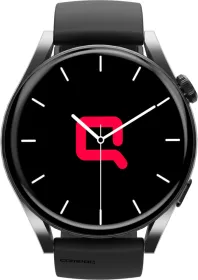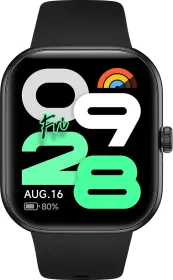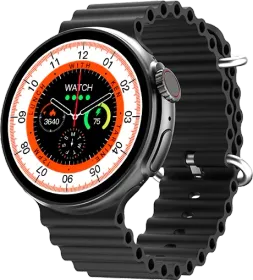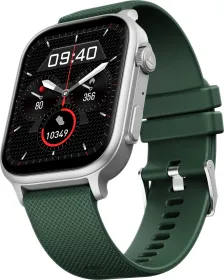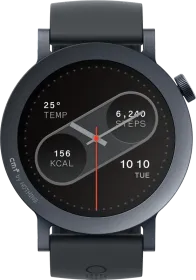The Taiwan-based chip manufacturer MediaTek has launched its latest processor: the Dimensity 9400 SoC. Equipped with exceptional on-device processing abilities, the processor is not just capable of handling heavy workloads, but it can also run Google’s Gemini Nano (with multimodal abilities) off the grid, entirely on the device.
While the company is promising significant upgrades over last year’s Dimensity 9300 SoC, how much of an improvement is the Dimensity 9400 SoC over its predecessor? To figure out, we’ll compare all the important aspects of the chipsets, including their CPU, GPU, NPU, and benchmark scores. So, without further ado, let’s start with this detailed comparison between the Dimensity 9400 Vs. Dimensity 9300.
ALSO SEE: Dimensity 9400 SoC Powered OPPO Find X8 Series Debuts October 24
Dimensity 9400 Vs. Dimensity 9300: CPU

To kick off, let’s discuss the CPU of the Dimensity 9400 SoC and the Dimensity 9300 SoC. Even though both the chipsets have an octa-core CPU, there are notable differences in the cluster design.
The Dimensity 9400 SoC features an ARM Cortex-X925 prime core clocked at 3.62GHz, three Cortex-X4 performance cores clocked at 3.30 GHz, and four Cortex-A720 efficient cores clocked at 2.4 GHz. Given that the clock speed of a core decides how fast it can process instructions, the Dimensity 9400 SoC is a significant improvement, especially since all the cores are faster than those on its predecessor.
For those catching up, the Dimensity 9300 SoC came with one ARM Cortex-X4 prime core clocked at 3.4 GHz, three Cortex-X4 performance cores clocked at 2.85 GHz, and four Cortex-A720 efficient cores clocked at 2.0 GHz.
It is important to mention here that the new processor is based on TSCM’s second-generation 3nm fabrication technology (N3E node), making it up to 40% more power efficient than the Dimensity 9300 SoC, which utilized TSCM’s 4nm fabrication tech.
Moreover, the Dimensity 9400 SoC offers around 35% faster single-core performance and 28% faster multi-core performance (as claimed by MediaTek). Further, it is much less power-hungry, which should result in noticeably better battery life on smartphones powered by the chipset.
Dimensity 9400 Vs. Dimensity 9300: GPU

As per the official press release, the Dimensity 9400 SoC features the Immortalis G925 Raytracing GPU, which features Arm’s new 5th-generation architecture. In contrast, the Dimensity 9300 SoC featured the Immortalis G720 GPU.
MediaTek suggests that the new GPU is capable of delivering up to 41% faster peak performance and up to 40% faster raytracing performance while being up to 44% power efficient. Although we don’t know much about the GPU’s frequency and cores, comparing the GPU score from the Antutu benchmark will help us get an idea.
As mentioned on nanoreview.net, the Dimensity 9400’s GPU scores about 1.32M points on the AnTuTu 10 benchmark, while the Dimensity 9300 maxes out at around 880K points. This suggests that the Dimensity 9400’s GPU is about 50% faster than its predecessor. Keep in mind that the AnTuTu scores for the new processor could be from a pre-production unit.
The Immortalis G925 GPU supports advanced features like PC-grade ray-tracing with new opacity micromaps (OMM), MediaTek’s Adaptive Gaming Technology 3.0, Frame Rate Converter, HyperEngine’s Super Resolution, and Adaptive Vision Engine that supports all video content formats like HDR10, HDR10+, and HDR Vivid.
ALSO READ: Best Snapdragon 8 Elite Smartphones To Debut in 2024
Dimensity 9400 Vs. Dimensity 9300: NPU

The Dimensity 9400 SoC comes with MediaTek’s 8th Generation NPU, which offers 100% faster diffusion generation performance and 80% faster LLM prompt performance when compared to the NPU on the Dimensity 9300 SoC. At the same time, the NPU can be up to 35% more power efficient.
Regarding GenAI capabilities, the new NPU supports longer content, faster LLM speculative speed, and both small language models and large language models. As explained in a dedicated article, the Dimensity 9400 SoC is the first non-Tensor chipset to come with on-device support for Gemini Nano (multimodal).
Other major additions include the world’s first Agentic AI engine, high-quality on-device video generation, and on-device LoRA training. Clearly, the Dimensity 9400 SoC’s generative AI capabilities are way ahead of the Dimensity 9300 SoC.
Dimensity 9400 Vs. Dimensity 9300: Optics And Display

While the Dimensity 9300 supported a max camera resolution of 320MP, its ISP (Imagiq 990) supported 18-bit RAW pictures, AI videography, and zero latency video preview. Further, the processor also offered 16 categories of scene segmentation adjustment. While that is pretty good, it doesn’t compare to the upgrades put forward by the Dimensity 9400 SoC.
Even though the Dimensity 9400 supports a max camera resolution of 320MP, its ISP (Imagiq 1090) enables full-range HDR zoom, sustained target focus, Gen-AI Super Zoom for up to 100x magnification, and efficient 4K60 video recording (the ISP consumes 14% less power than the predecessor). The max video resolution on the Dimensity 9300 was 8K30, and the Dimensity 9400 takes it to the next level with 8K60.
Regarding display, the Dimensity 9400 supports WQHD+ resolution at up to 180Hz refresh rate. Further, the chipset also supports tri-folding displays, some of which showed up as prototypes in recent times. The Dimensity 9300, on the other hand, is limited to WQHD at 180Hz.
Also See: Snapdragon 8 Elite Leaked Benchmark Reveal Overheating Issues Despite Record Performance
Dimensity 9400 Vs. Dimensity 9300: Memory And Connectivity

Although both the Dimensity 9400 and the Dimensity 9300 chipsets support LPDDR5X memory, the older chipset also supports LPDDR5T memory, which, in comparison, is about 13% more than LPDDR5X. Nonetheless, the max memory frequency has been increased to 10667 Mbps, up from 9600 Mbps. Regarding storage, both processors support UFS 4 + MCQ.
Regarding connectivity, both chips support Wi-Fi 7, but there are a few key differences. The peak Wi-Fi data rate is up to 7.3 Gbps on the Dimensity 9400, up from 6.5 Gbps on the Dimensity 9300. Further, the former has a new 4nm Wi-Fi/Bluetooth chip that is 50% more power-efficient. The chip can also address all three bands (2.4 GHz, 5GHz, 6GHz).
The Dimensity 9300 featured Xtra Range 2.0 technology, while the Dimensity 9400 comes with Xtra Range 3.0, which supports dual-band connections and extends coverage up to 30 meters. MediaTek has also worked on Bluetooth technology for the Dimensoty 9400 SoC.
Even though the processor features Bluetooth v5.4 technology (the same as its predecessor), it can stream lossless audio at a 2X sound sampling rate or spatial audio with a 3X greater sampling rate. In addition, the processor features the “lowest power consumption among flagship smartphone chips when using BLE location advertising.”
With the Dimensity 9300 SoC, MediaTek supported both Sub-6Ghz and mmWave 5G connectivity. However, that is not the case with the Dimensity 9400 SoC. The official spec sheet of the new chipset doesn’t mention mmWave under “Cellular Technologies.” Nonetheless, the “3GPP Release-17 5G Modem” can achieve up to 7Gbps data speeds using the Sub-6GHz technology.
FAQs
Is the Dimensity 9400 SoC the fastest chipset for Android smartphones?
Although the Snapdragon 8 Elite is right on the edge, MediaTek Dimensity 9400 SoC is the fastest chipset for Android smartphones (for now).
How does the Dimensity 9400 SoC compare to the Apple A18 Pro chip?
The prime core of the Dimensity 9400 SoC is much slower than the A18 Pro. Hence, between Apple and MediaTek, the former’s chipset is the faster. However, both processors are based on TSMC’s 3nm fabrication technology.
How does Dimensity 9400 SoC perform on benchmarks?
The Dimensity 9400 SoC is among the first chipsets to score 3M points on the AnTuTu benchmarks. Further, it also does well on GeekBench 6 (around 2,800 points in the single-core and 8.900 points in the multi-core test).
What phones will feature the Dimensity 9400 SoC?
Upcoming flagships like the vivo X200, X20 Pro, and the Galaxy S25 are rumored to feature the Dimensity 9400 SoC.
You can follow Smartprix on Twitter, Facebook, Instagram, and Google News. Visit smartprix.com for the latest tech and auto news, reviews, and guides.















